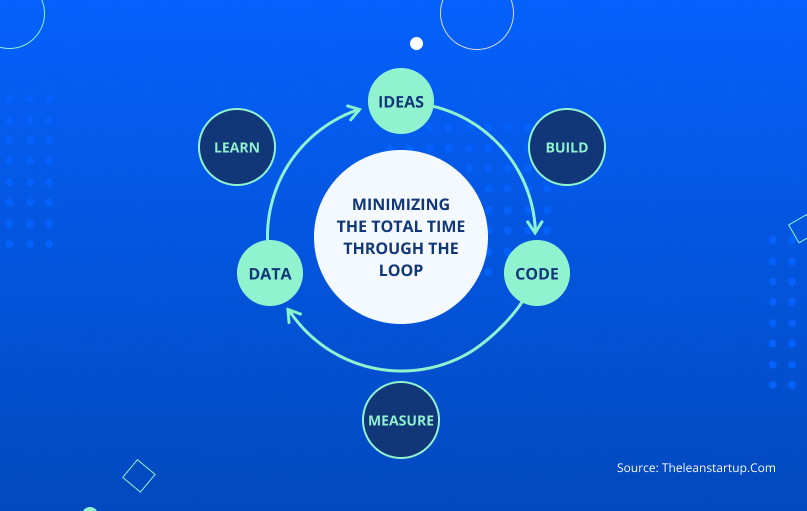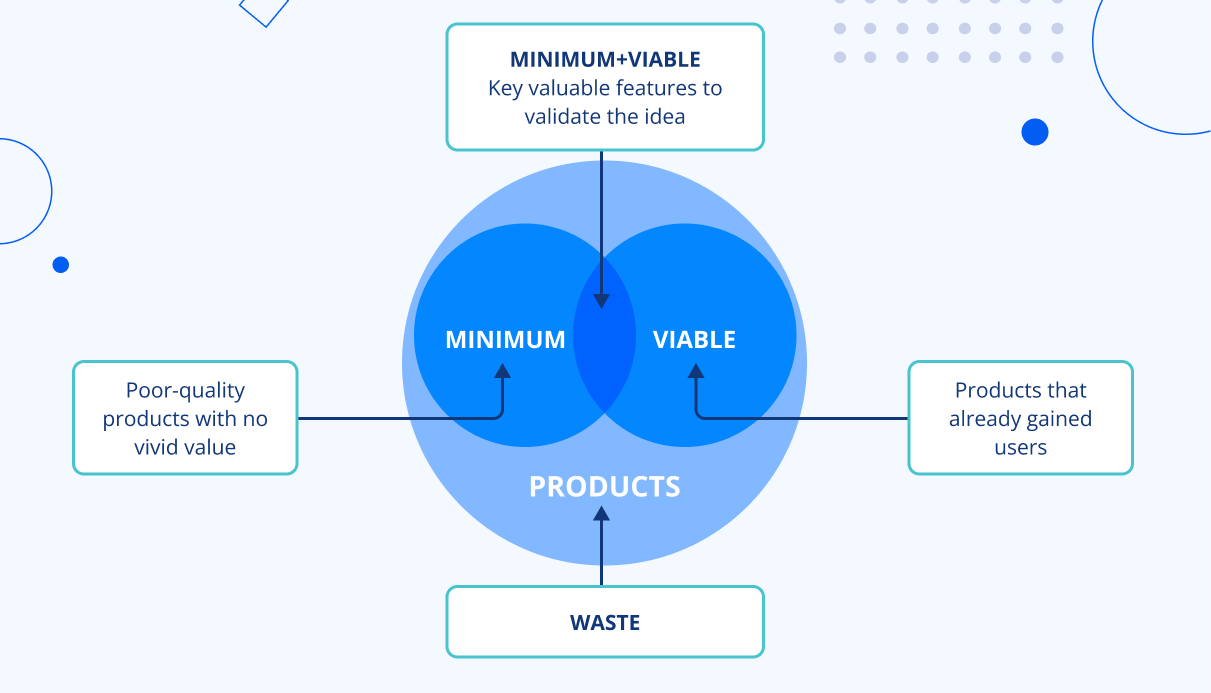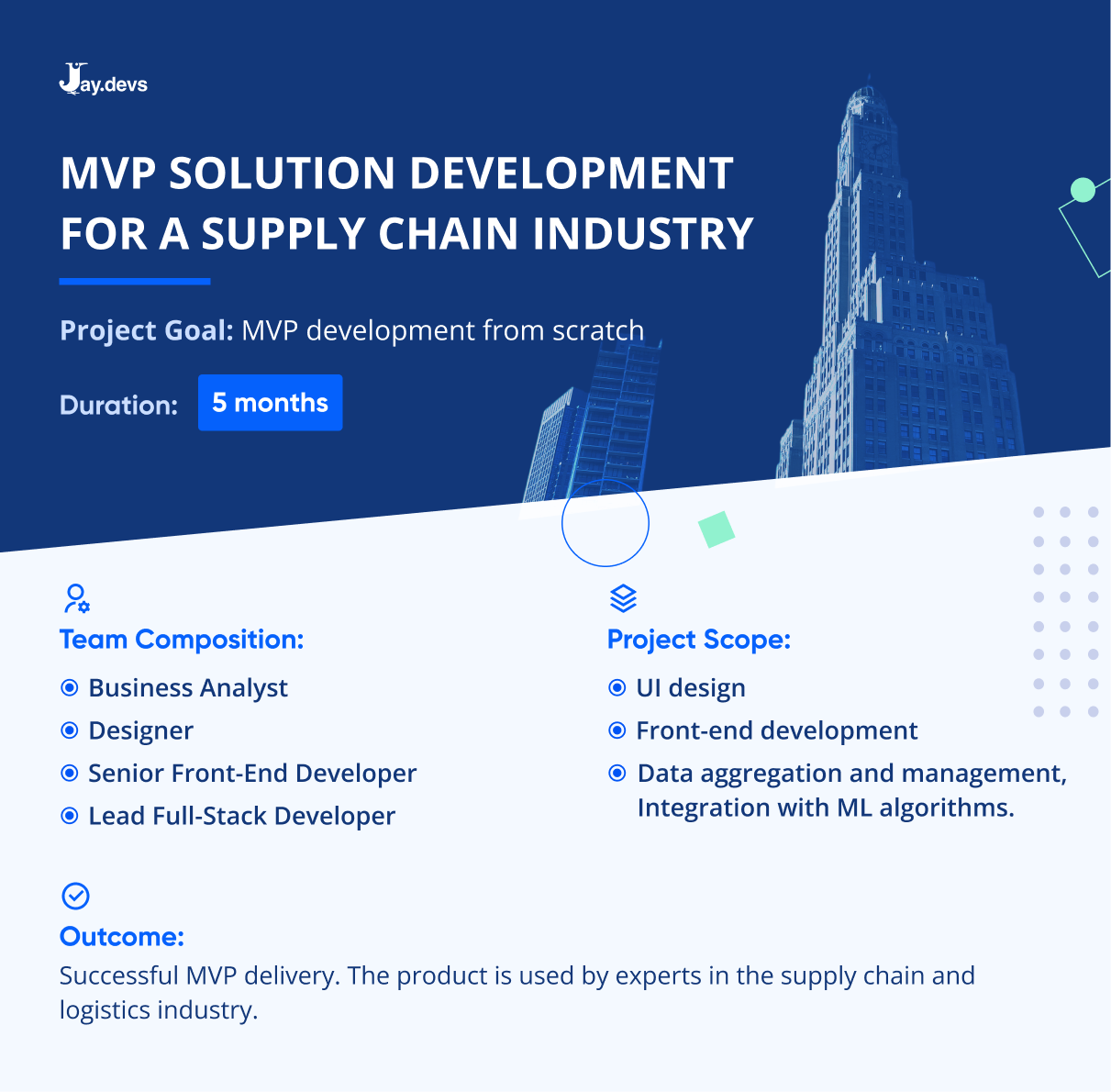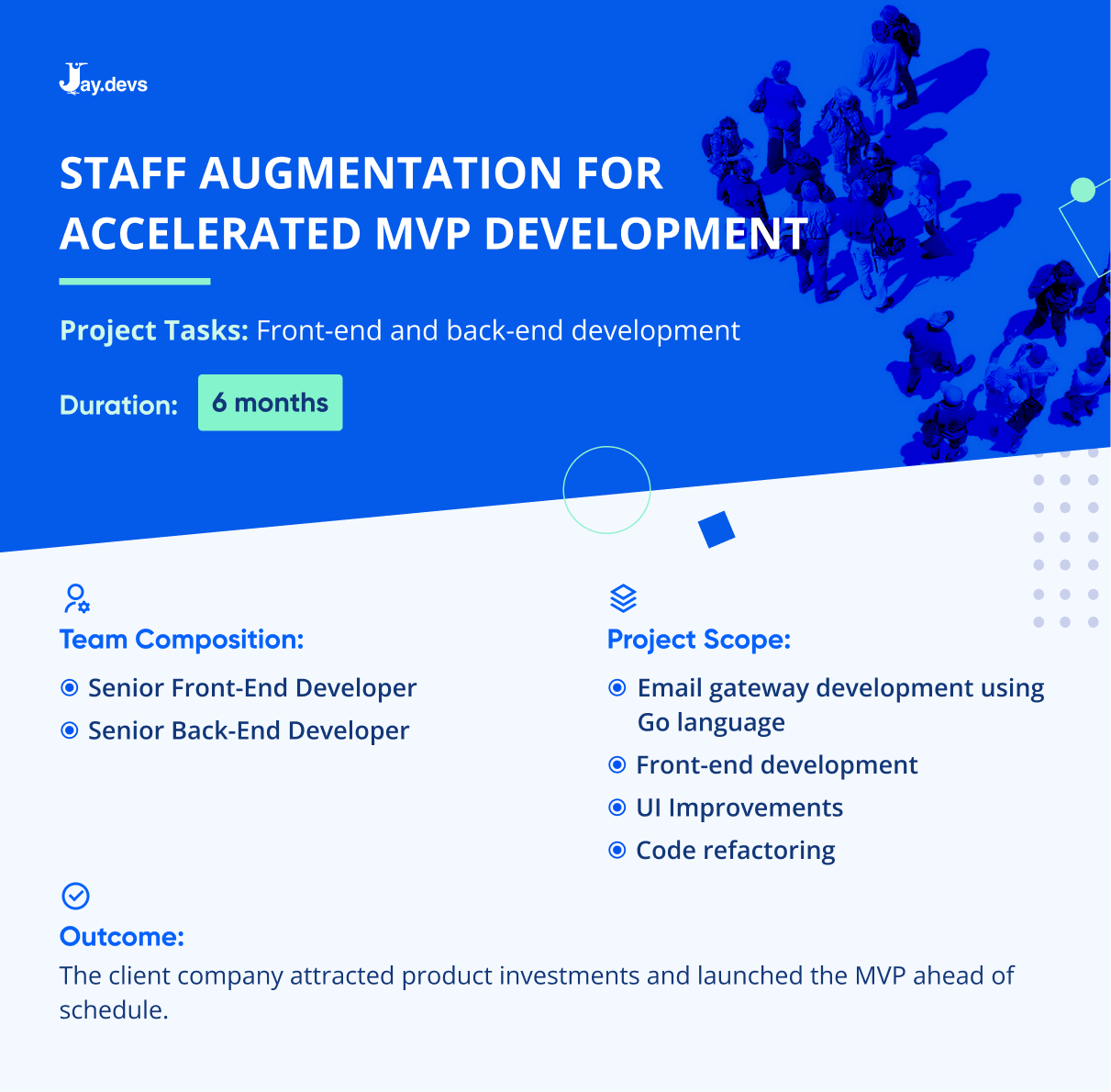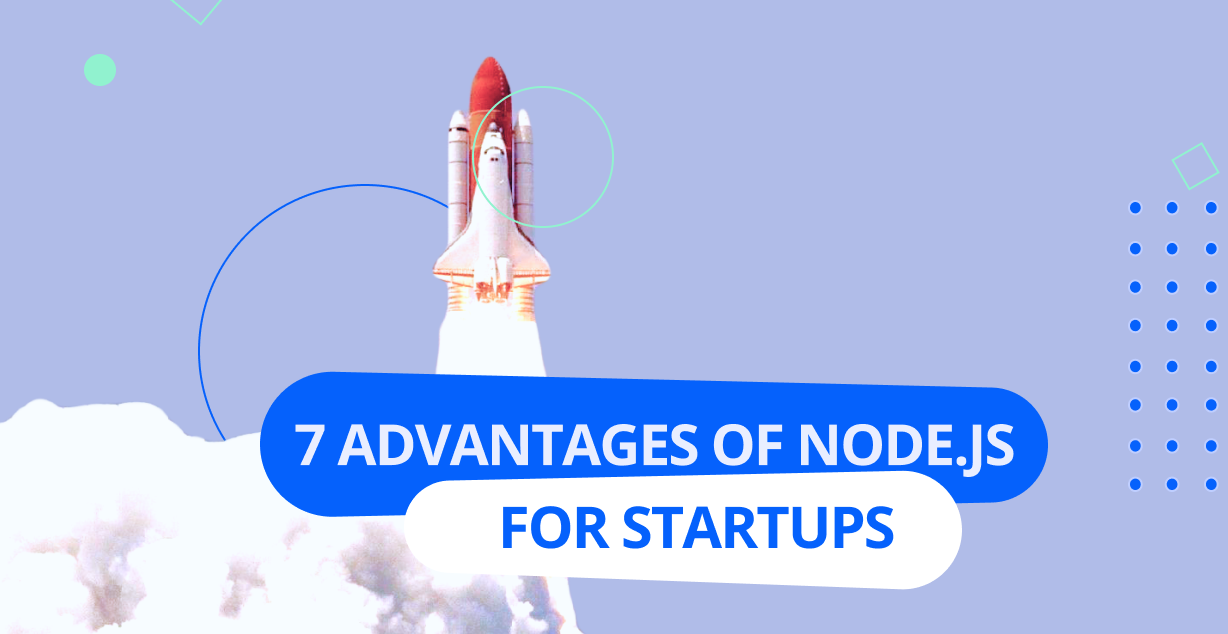Whether your company is a startup or an established business, the Minimum Viable Product (MVP) in software development is a cornerstone concept for launching new tech products.
In this article, we will delve into the fundamentals of MVP development, explore when a business might need one, and provide a step-by-step checklist for successful MVP implementation.
Minimum Viable Product Development: Basics You Should Know
At its core, a Minimum Viable Product is the simplest version of a tech product designed to test the idea. It includes just enough features to attract early adopters and collect feedback for further development.
The MVP is a component of the Lean Startup philosophy, where companies launch their big ideas, thereby minimizing wasted time, money, and effort. To make it a reality, this methodology relies on the build-measure-learn principle. In simplest terms, it is practically a loop where each action is repeated. Such an approach allows businesses to find the shortest path to successful products by working smarter, not harder.
Hence, the core idea of MVP development here is creating a functional product with minimal resources, measuring the core metrics and response, and making informed decisions about future product development steps.
If you regularly visit startup events or business conferences, you may hear different perspectives on how an MVP should appear. Despite varying opinions, any Minimum Valuable Product typically includes the following characteristics:
- Value over Functionality: A Minimum Viable Product is a beta version of your final product. Therefore, it should include a minimum feature set to solve a problem or address a particular need.
- User-Centered: MVP development prioritizes the user’s perspective. It aims to create a product that resonates with the target audience.
- Evolving and Iterative Development: An MVP development process is not a one-time endeavor. Companies build, measure, learn, and repeat. In the event of success, they end up with a complete product.
The Purpose for Creating an MVP
Given the concept and characteristics of product MVPs, businesses usually pursue the following objectives:
Validating the Idea
An MVP allows businesses to dip their toes in the water before committing significant time and resources to build a full-fledged product. By releasing a minimal version, companies ensure a genuine market demand for a product and decide whether it is worth further development.
Getting Faster to Market
In a crowded and competitive tech environment, speed is of the essence. An MVP enables companies to enter the market swiftly, start building the initial customer base, and analyze user interactions. While competitors labor over adding “just one more feature,” your product team can already define effective MVP adjustments and move forward.
Getting Data-Driven Insights
The MVP approach is focused on thorough market research and getting actual customer feedback. As a result, businesses can invest their resources wisely and focus on what truly matters to their audience rather than relying on guesswork.
Eventually, the importance of an MVP in software development cannot be denied. When starting a new product, it helps gather valuable data and eliminate unnecessary steps in the project development process.
When Does Your Company Need an MVP?
Innovative and emerging projects often come with huge uncertainty. In fact, statistics reveal that only 10% of startups achieve success, which highlights the challenge.
From an economic perspective, developing an MVP can be a game-changer in such cases. The key is not just risk mitigation but also the ability to test even the riskiest ideas with minimal “waste” and reduced investments. If the MVP fails to gain traction, you can pivot or refine your product concept without massive financial losses.
But does this mean that only startups and small businesses require MVP software development? Mostly yes, but not necessarily. Let’s examine the scenarios that may benefit from this approach.
Early-Stage Startups
Startups often operate with limited resources. Building an MVP is typically the very first and most cost-effective way to embark on their journey. It helps secure initial and potential customers and generate revenue even before the entire product is developed.
Attracting Investments
Investors are more likely to support your project with funds if they witness tangible progress. An MVP demonstrates not only concrete steps toward product development but also market validation and user interest. Eventually, it helps make your pitch more convincing in fundraising efforts.
Product Evolution
If your company already has an existing software product that requires a significant overhaul to reach new heights, consider starting with an MVP. This approach minimizes disruption to the existing user base while enabling you to test and refine the new elements.
Accelerating Growth
Even established companies can benefit from MVPs when entering new markets or launching new products. It allows them to fine-tune existing strategies and offerings for maximum market impact and success.
Overall, adopting MVP software development brings businesses closer to the target audience, uncovers market demands, and contributes positively to return on investment. The choice to opt for Minimum Viable Products hinges on product strategies and development stages rather than the size of the company.
MVP vs Prototype vs PoC: Understanding the Difference
The MVP concept is widely discussed in the startup and business community. However, it’s often mentioned interchangeably with other software development approaches, such as prototypes and Proof of Concepts (PoC). While these terms are related, they serve different purposes.
A prototype is a visual model of your product used primarily for usability testing. It is a non-functional representation that helps visualize the user interface and user experience. Prototypes focus on the “look and feel” of the product and are not intended for real-world testing or user feedback collection.
Proof of Concept is a small-scale, functional demonstration of an idea. It is used to validate the technical feasibility of a specific feature or technology. Proof of Concept is not designed to test user preferences but rather to determine whether something can be done from a technical standpoint.
To provide you with a comprehensive overview of the key differences, we’ve created a summary table:
Why and How to Outsource MVP Development?
Outsourcing isn’t just a buzzword but a pragmatic approach that offers flexibility and tangible advantages. It has become a viable option for startups operating with limited resources and enterprises seeking to expedite the development process.
Here are a few benefits provided by outsourcing MVP software development:
- Access to Specialized Expertise: Outsourcing allows companies to benefit from the expertise of specialized teams and individuals experienced in building MVPs. It is not only about engineers but also R&D specialists, business analysts, and other experts well-versed in the best MVP development practices.
- Cost Efficiency: Outsourcing can be budget-friendly, especially if you don’t have an in-house development team or your existing team is juggling multiple projects. You can often find outsourcing partners with competitive rates.
- Reduced Administrative Burden: Opting for MVP development services means delegating recruitment, management, and payroll tasks to the outsourcing provider. This frees you to concentrate on the core aspects of your business.
There are two primary approaches to outsourcing: project development and IT staff augmentation. However, the choice depends on various factors, including your company’s existing resources, budgets, and project deadlines.
Project Development
Under this collaboration model, you engage a specialized company providing MVP development services. Basically, you delegate the project to a team that operates mostly independently, managing all aspects of development from start to finish.
This approach is ideal when you lack in-house development resources and have established project budgets and timeframes.
Team Augmentation
In this scenario, you contract with a staff augmentation company, like JayDevs, to amplify the existing team with external specialists. These specialists work in tandem with your product team, enhancing their capabilities and speeding up development.
This model allows you to access specific skills and expertise that may be missing internally. Additionally, you retain full control over the development process.
Ultimately, it’s crucial to carefully assess your needs and resources to choose a suitable model. If you have doubts or need guidance, JayDevs is available to offer consultation and deliver MVP software development services tailored to your particular business case.
MVP Software Development: JayDevs Case Studies
JayDevs is not strictly an MVP development company but has gained solid expertise in MVP development so far. To meet the evolving project needs, we offer the flexibility to set up an expert product team or complement your existing team with specialized professionals.
Check our clients’ experiences below to gain more insight.
1. MVP Solution Development for a Supply Chain Industry
The USA-based company, which specializes in developing supply chain solutions, approached JayDevs in search of a reliable outsourcing vendor. Their objective was to create an MVP from scratch and integrate it with ML algorithms.
Within our collaboration, we’ve formed a dedicated team that includes a Business Analyst, Designer, Senior front-end developer, and Lead full-stack developer.
The business analyst from JD outlined the project requirements and scope of work and agreed on them with the client. The primary project components included UI design, front-end development, data aggregation, and presenting the data in a user-friendly format.
The outcome was a successful MVP delivery within a span of 5 months. The solution is used by logistics experts in creating the most resilient supply chain routes.
2. Staff Augmentation for Accelerated MVP Development Process
Our client from Spain required extra front-end and back-end developers for their MVP software development project. We thoroughly assessed project requirements and quickly provided 2 specialists with the required expertise.
On the back-end, the primary focus was on the development of the email gateway, utilizing the Go language. Meanwhile, the key challenge lay on the front-end side: there were no layouts or product prototypes, only a general vision. In response, the JD engineer suggested and implemented UI changes based on best practices in UX.
Within a short time, developers from JayDevs helped implement even more features than expected. This enabled the client company to attract product investments and enter the market sooner with a robust Minimum Viable Product.
3. Prototype Development for Attracting Investors
Another company reached out to JayDevs with an urgent need to deliver a plugin design. The idea of a plugin is to automate routine actions for filling in the lengthy questionnaires required in big companies.
Since the prototype must be done swiftly and with great attention to detail, we engaged a senior UX/UI designer from JayDevs with expertise in quick prototyping. Closely collaborating with the client, the specialist from JayDevs managed to do more than planned.
As a result, the prototype was successfully finished in a week and showcased to potential investors.
MVP Implementation: A Step-By-Step Checklist
In conclusion, MVP software development is a powerful strategy for reducing risks when testing product hypotheses. It equips businesses with the means to discover the product market fit, gain invaluable user insights, and capture the attention of investors.
However, MVP implementation requires a structured approach like any other software development endeavor. To assist you in navigating this process, we’ve created a step-by-step checklist. Download it below and set your tech product on the path to success!






